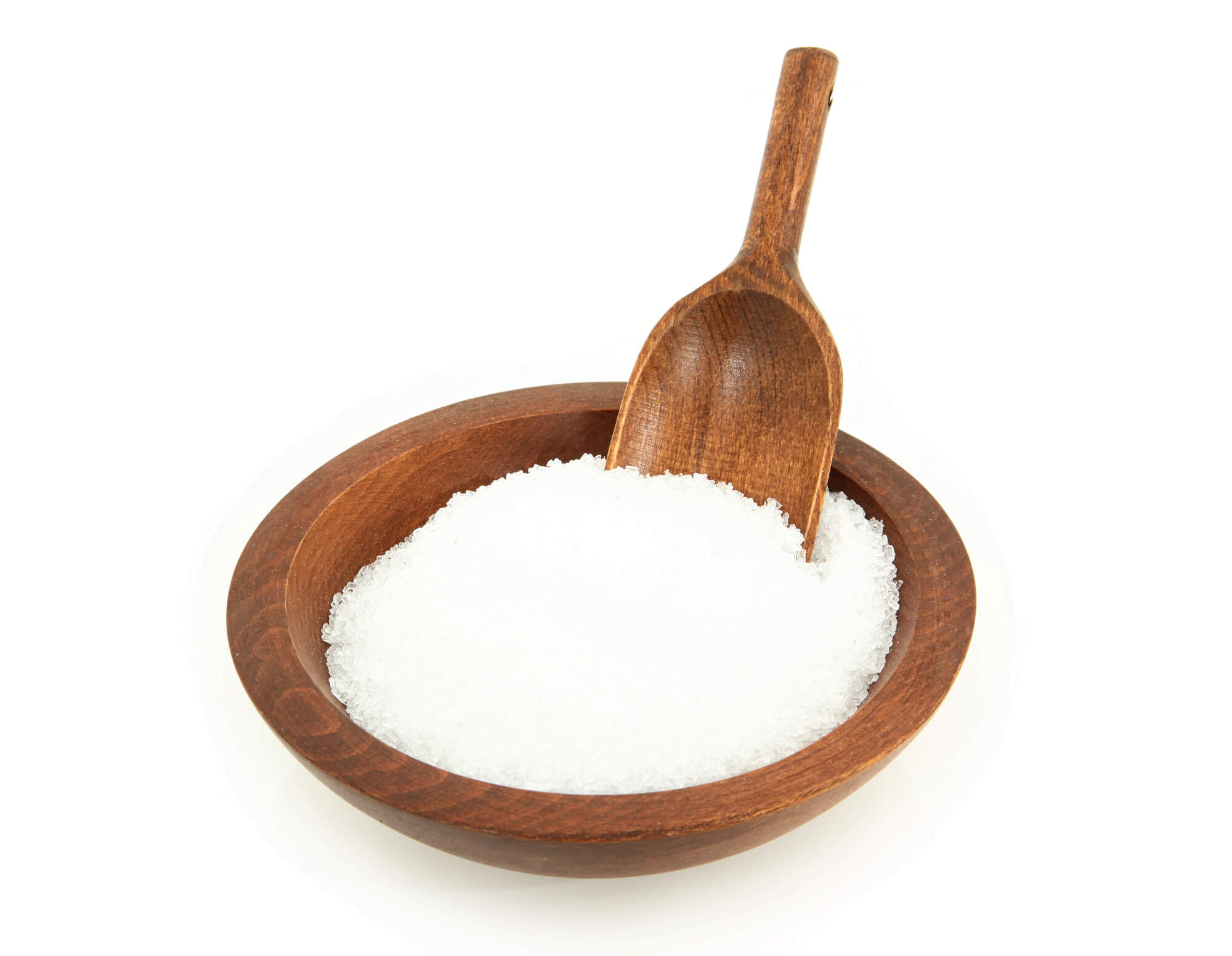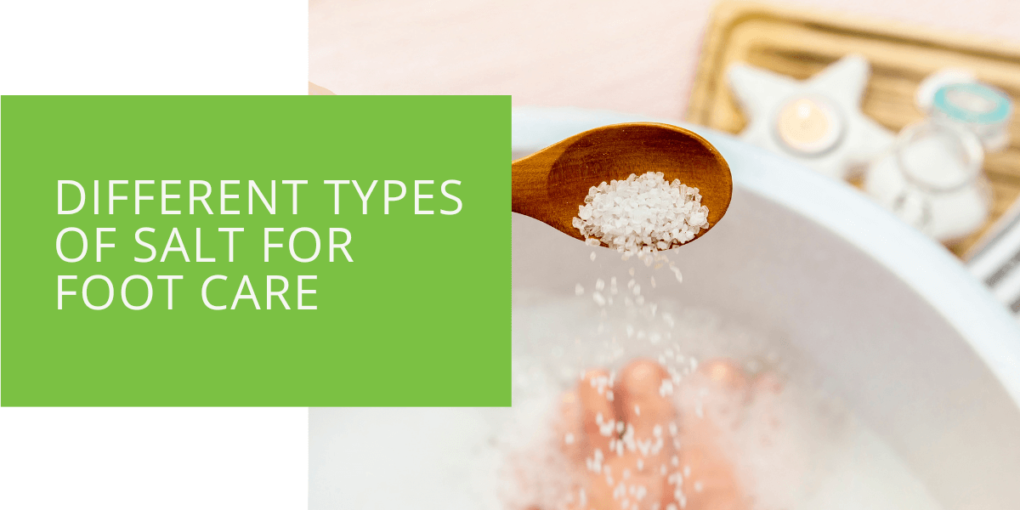Understanding the Different Types of Salt for Foot Care
Taking care of your feet is essential for overall well-being. Yet, it's often a neglected part of our self-care routine. That's why we're here to remind you of the wonders of foot care using salts. The best part? You don't need to spend a fortune on fancy products to pamper your feet. A simple, effective, and affordable remedy that you can find in your kitchen cupboard is salt.
However, not all salts are created equal. There are differences between sea salt, table salt, and Epsom salt that you need to know about. Each of these salts has unique properties and benefits for your feet. Incorporating salts into your foot care routine can do wonders, from relaxing sore muscles to rejuvenating your skin. This comprehensive guide will delve into the differences between these salts and help you understand their distinctions. So, whether you're a busy professional or need some TLC for your feet, keep reading to learn how to incorporate salts into your self-care routine.
Key Takeaways
- Sea salt, table salt, and Epsom salt have distinct properties and benefits for foot care. Sea salt offers exfoliation and anti-inflammatory benefits, while Epsom salt relieves sore muscles and swelling.
- Epsom salt, rich in magnesium sulfate, is an excellent choice for therapeutic foot soaks, soothing sore feet, and reducing inflammation.
- When choosing a salt for foot care, consider your specific needs and consult a podiatrist for personalized advice to maintain healthy and pain-free feet.
Sea Salt: The Ocean's Gift to Foot Health
What is Sea Salt?
As the name suggests, sea salt is derived from evaporated seawater. Unlike table salt, it is less processed and retains more natural minerals. These minerals, including magnesium, calcium, and potassium, make it a valuable addition to your foot care regimen.
Benefits of Sea Salt for Foot Health
- Magnesium content: Sea salt is rich in magnesium, a vital mineral in muscle and nerve function. Soaking your feet in a sea salt bath can help relieve muscle cramps and tension.
- Exfoliation: The coarse texture of sea salt makes it an excellent natural exfoliant. It can help remove dead skin cells and improve your feet' overall appearance and softness.
- Anti-inflammatory properties: Sea salt's naturally occurring minerals can reduce inflammation and relieve gout or arthritis.
How to Use Sea Salt for Foot Care
To enjoy the benefits of sea salt for your feet, follow these steps:
- Fill a basin with warm water.
- Add a handful of sea salt to the water and stir until it dissolves.
- Soak your feet for 15-20 minutes.
- Gently scrub your feet with a pumice stone to exfoliate.
- Pat your feet dry and apply moisturizer.
Table Salt: A Common Household Ingredient
Definition of Table Salt
Table salt, or sodium chloride, is the most commonly used salt in households worldwide. It is highly refined, with most of its minerals removed during processing. While it may not offer the same benefits as sea salt or Epsom salt, it can still be useful for certain foot-related issues.
Differences from Sea Salt
- Minimal mineral content: Table salt primarily comprises sodium chloride, with few trace minerals remaining. As a result, it lacks the additional benefits of sea salt's mineral composition.
- Caution with open wounds: Due to its fine texture, table salt can sting when applied to open cuts or sores. It is not recommended for this purpose.
When to Avoid Using Table Salt on Your Feet
- If you have open wounds or blisters on your feet, avoid using table salt as it may cause discomfort.
- Sea salt or Epsom salt is generally better for therapeutic foot soaks due to its higher mineral content.

Epsom Salt: The Magnesium Sulfate Solution
Introduction to Epsom Salt
Epsom salt, chemically known as magnesium sulfate, is a crystalline substance that occurs naturally. Its impressive therapeutic properties have gained popularity, making it a staple in foot care routines.
Magnesium Sulfate Content and Its Benefits
- Magnesium and sulfate are essential minerals for the body. Magnesium is known for its role in muscle and nerve function, while sulfate supports detoxification.
- Epsom salt can soothe sore muscles, reduce swelling, and promote relaxation.
- It is particularly effective for conditions like plantar fasciitis, where inflammation and pain are common.
How to Use Epsom Salt for Foot Care
To enjoy the benefits of Epsom salt for your feet, follow these steps:
- Fill a basin with warm water.
- Add a cup of Epsom salt to the water and stir until it dissolves.
- Soak your feet for 20-30 minutes to relieve pain and inflammation.
The Differences Between Epsom Salt, Sea Salt, and Table Salt
Epsom Salt vs. Sea Salt
When comparing Epsom salt and sea salt for foot care, consider the following factors:
- Mineral content: Epsom salt contains magnesium sulfate, while sea salt is rich in various minerals. Epsom salt may be a better choice if you're looking for magnesium-specific benefits.
- Use in foot baths: Epsom salt is often recommended to relieve muscle soreness, reduce swelling, and promote relaxation.
Epsom Salt vs. Table Salt
The differences between Epsom salt and table salt for foot care are significant:
- Mineral content: Epsom salt contains magnesium and sulfate, providing unique therapeutic benefits. Table salt, on the other hand, lacks these minerals.
- Effectiveness: Epsom salt is highly effective for soothing sore feet and reducing inflammation, making it a better choice for foot care.
Bath Salts and Their Role in Foot Care
Introduction to Bath Salts
Bath salts are a broad category of salts used for relaxation and rejuvenation during baths. These salts often contain various minerals and sometimes essential oils for added benefits.
Epsom Salt vs. Bath Salts vs. Sea Salt
Understanding the differences between these salts can help you choose the right one for your foot bath:
- Epsom salt is primarily magnesium sulfate and ideal for therapeutic foot soaks.
- Bath salts may include a variety of minerals and essential oils, offering a spa-like experience for relaxation.
- Sea salt can be used in bath salts for its mineral-rich properties, providing a blend of therapeutic and relaxation benefits.
Conclusion
The type of salt you choose for your foot care routine can significantly affect your overall foot health and well-being. Sea salt, table salt, and Epsom salt have unique properties and benefits. For therapeutic purposes, Epsom salt stands out with its magnesium sulfate content, making it a top choice for soothing sore feet, reducing inflammation, and promoting relaxation.
Consider your foot care needs when deciding which salt to use, and consult a podiatrist for personalized advice. Incorporating salt into your foot care routine and other practices like moisturizing and proper footwear can help you achieve and maintain healthy, pain-free feet.
Don't hesitate to schedule an appointment with our expert podiatrists to enhance your foot care regimen further. We're here to support your journey to happy, healthy feet!
FAQ
Which is better, sea salt or Epsom salt?
Both sea salt and Epsom salt have their unique advantages. Sea salt is beneficial for exfoliation and contains various minerals, while Epsom salt, with its magnesium sulfate content, is excellent for reducing inflammation and soothing sore muscles. The choice depends on your specific foot care needs.
What salt is good for inflammation?
Epsom salt, with its magnesium sulfate content, is particularly effective for reducing inflammation. Soaking your feet in an Epsom salt bath can help alleviate swelling and discomfort.
Can you substitute sea salt for Epsom salt?
While you can use sea salt for foot care, it's essential to recognize that sea salt and Epsom salt have different mineral compositions and properties. If you want to address inflammation and muscle soreness, Epsom salt is the preferred choice.
What can I use if I don't have Epsom salt?
If you don't have Epsom salt, you can still enjoy foot soaks using alternatives like sea salt or bath salts. These salts offer unique benefits and can provide relaxation and skin exfoliation, although they may not have the same anti-inflammatory properties as Epsom salt.

